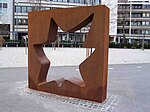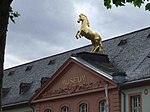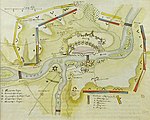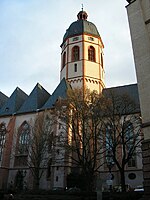Electorate of Mainz

The Electorate of Mainz (German: Kurfürstentum Mainz or Kurmainz, Latin: Electoratus Moguntinus), previously known in English as Mentz and by its French name Mayence, was one of the most prestigious and influential states of the Holy Roman Empire. In the Roman Catholic hierarchy, the Archbishop-Elector of Mainz was also the Primate of Germany (primas Germaniae), a purely honorary dignity that was unsuccessfully claimed from time to time by other archbishops. There were only two other ecclesiastical Prince-electors in the Empire: the Electorate of Cologne and the Electorate of Trier. The Archbishop-Elector of Mainz was also archchancellor of Germany (one of the three component titular kingdoms of the Holy Roman Empire, the other two being Italy and Burgundy) and, as such, ranked first among all ecclesiastical and secular princes of the Empire, and was second only to the Emperor. His political role, particularly as an intermediary between the Estates of the Empire and the Emperor, was considerable.
Excerpt from the Wikipedia article Electorate of Mainz (License: CC BY-SA 3.0, Authors, Images).Electorate of Mainz
Große Langgasse, Mainz Altstadt
Geographical coordinates (GPS) Address Nearby Places Show on map
Geographical coordinates (GPS)
| Latitude | Longitude |
|---|---|
| N 50 ° | E 8.2666666666667 ° |
Address
Große Langgasse 9
55116 Mainz, Altstadt
Rhineland-Palatinate, Germany
Open on Google Maps











